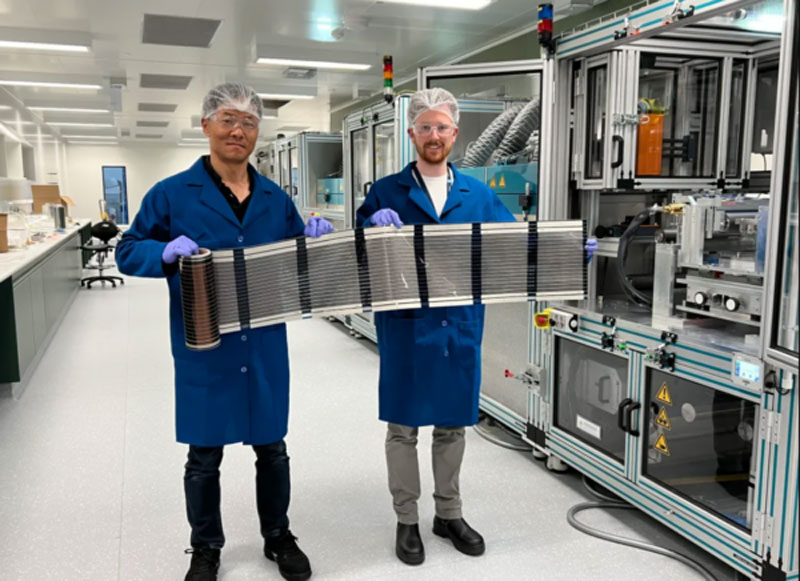In Australia, 15 years after the development of technology for the production of flexible solar panels from perovskite began, their pilot production began. The $4.4 million venture began operating in the Melbourne suburb of Clayton. Solar cells at the plant are produced in a continuous cycle by printing in the form of rolls. The technology is close to commercial level, but it may take at least 5–10 years before it reaches the market.

Image source: CSIRO
Flexible solar panels are printed in a 4-5 layer structure in a continuous cycle, including lamination. The output is a ready-to-use product. The production is capable of producing 14 thousand solar cells per day. However, it is still a laboratory run by researchers from CSIRO, the Australian Scientific Research Agency.
To commercialize the technology, production scale, efficiency of the panels and the length of their life cycle will be important, with which perovskites have problems. In terms of effectiveness, CSIRO reported in March 2024,
That the efficiency of flexible perovskite photopanel assemblies (for large-area panels) is 11%, and for individual cells – 15.5%. It is impossible to reach the market with such efficiency, except for panels intended for special operating conditions.
Australian scientists believe that even low efficiency is better than no efficiency at all. Flexible solar panels can be used to power electric vehicles, mobile homes, buildings, wearable electronics and where it is not possible to install classic silicon solar panels. Flexible perovskite elements are not intended to replace silicon panels, but only harmoniously complement them.

All flexible photovoltaics produced by the plant will be transferred to researchers and developers to evaluate its capabilities and design advanced products using it. This is not yet the commercialization of the technology, but a step closer to this moment.